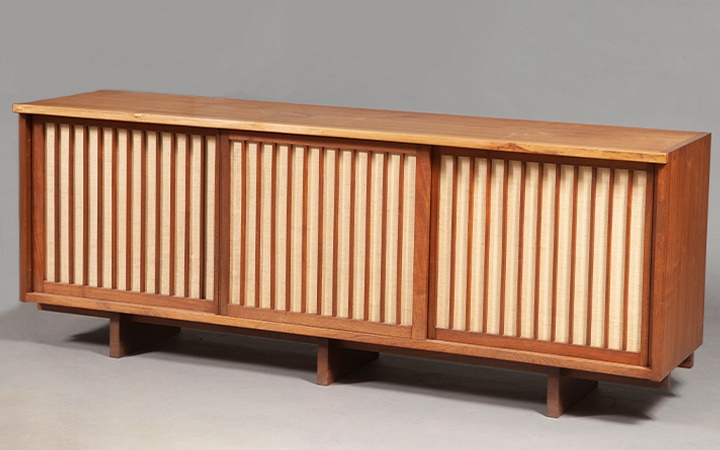George Nakashima: Soul of a Tree
06/01/2022 Furniture & Decorative Arts

Born in Spokane, Washington to immigrant parents, George Nakashima (American, 1905-1990) attended the University of Washington, earning a degree in architecture, and MIT, where he received his master's degree. After school he traveled to Paris, North Africa and Japan before being sent to India to supervise a construction project. It was in India where he first began making furniture. When he returned to the United States in 1940, he settled in Seattle and began practicing woodworking and making furniture full time. Like many other Japanese Americans, George Nakashima was interned during World War II. He met Gentaro Hikogawa, who was trained in traditional Japanese carpentry, at Camp Minidoka in Hunt, Idaho. It was under Hikogawa’s tutelage that Nakashima developed his own appreciation for woodworking. Nakashima held to the idea that one had to respect the craftsmanship as much as the materials.
“The tree’s fate rests with the woodworker. In hundreds of years its lively juices have nurtured its unique substance. A graining, a subtle coloring, an aura, a presence will exist this once, never to reappear. It is to catch this moment, to identify with this presence, to find this fleeting relationship, to capture its spirit, which challenges the woodworker.”
– George Nakashima, from Soul of a Tree
Nakashima believed the best way to respect the tree was to cut the wood in a manner to display all the characteristics that make each tree unique. He found a way to make furniture utilitarian and functional while retaining the inherent beauty of natural materials. His approach retained the unique marks of the materials as well as the hand of the craftsperson.
Nakashima’s approach to craftsmanship harkened back to earlier periods while other Post-War designers were engaging with new materials and construction. He used hand-held tools because he felt creating a piece of furniture should bring joy to the maker. He believed the craftsman should work from the inside out, just as a tree grows, to discover the real beauty and spirituality of what he is creating. He felt one had to abandon the ideas of 'style' and 'less is more' – both popular ideals in post-War America – to allow the wood and the worker to be spontaneous.
Doyle+Design / Auction June 8, 2022
A highlight of the Doyle+Design auction on June 8, 2022 is a George Nakashima Walnut Credenza, signed and dated 1990. The credenza features a rectangular top with live edge above three grilled pandanus cloth sliding doors that open to shelves flanking four graduated drawers.